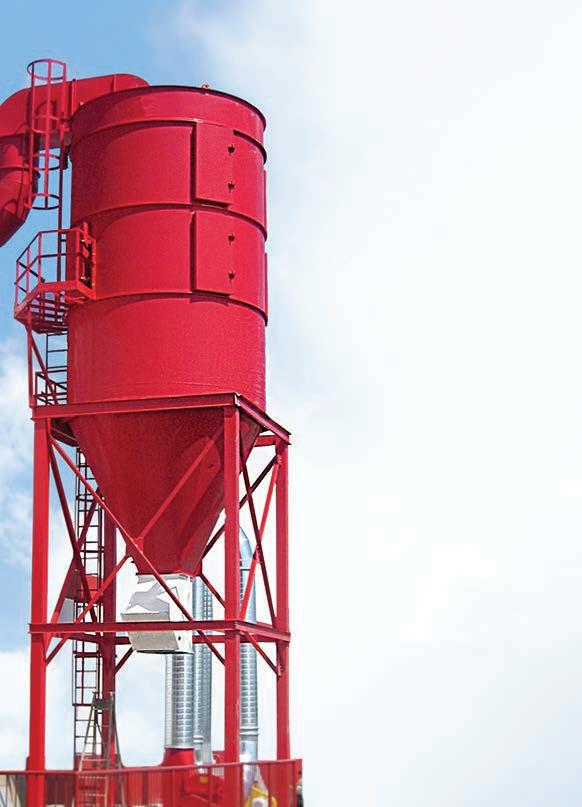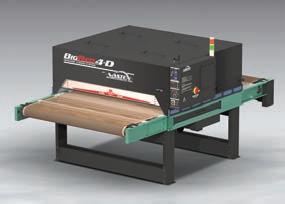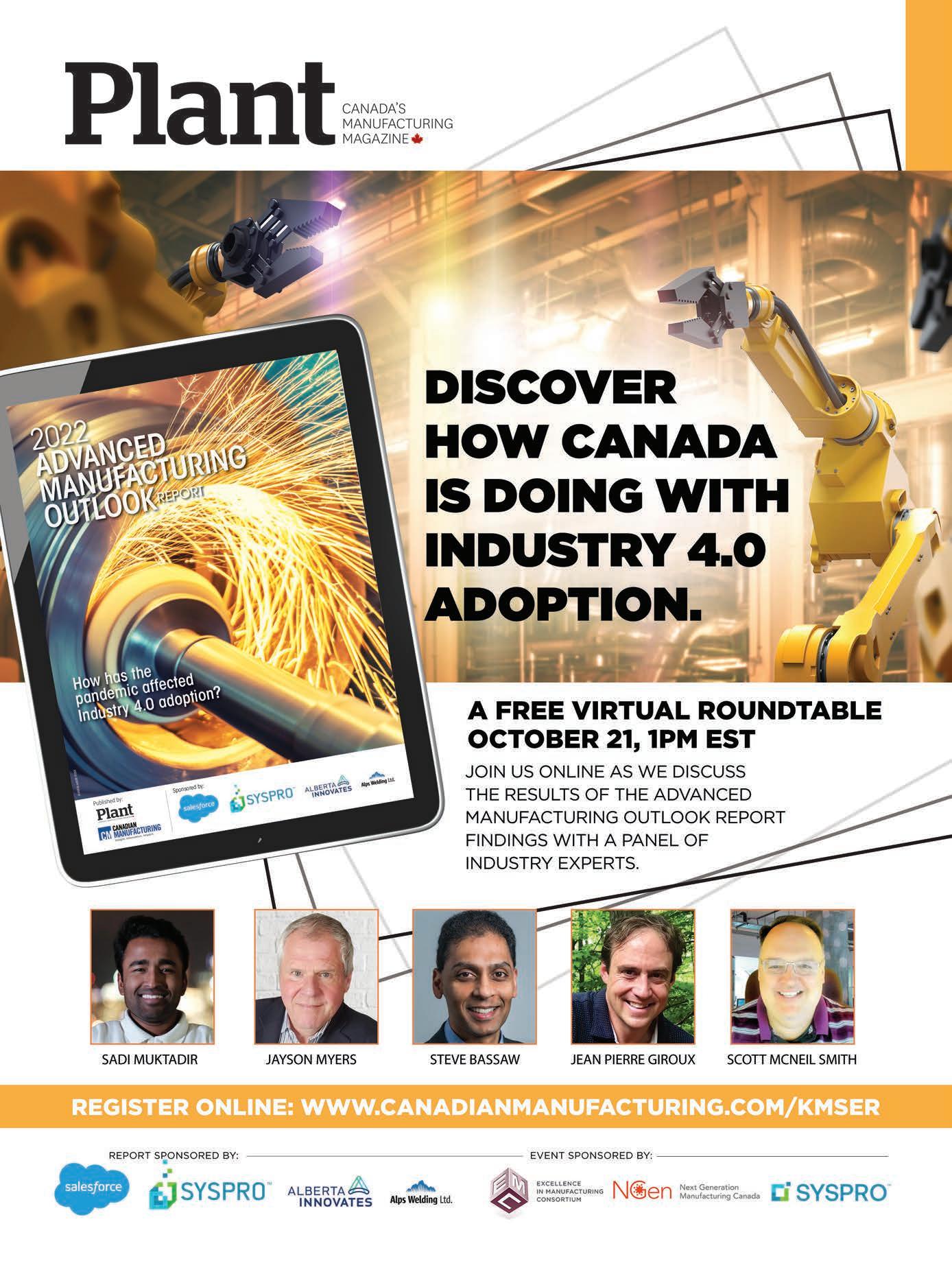
28 minute read
Knowing your human talent
Knowing your human talent to create a lean culture
It has been said that the factory of the future will only require two occupants; one human and one dog.
BY RICHARD KUNST
The primary purpose of the human is to feed the dog, and the purpose of the dog is to bite the human if it touches any of the equipment. But a culture will still reside in any factory of the future, no matter how sophisticated or automated.
Creating a lean culture seems very difficult, but it does not have to be that way.
“How do we create a lean culture?”, that’s a question we often hear from managers and associates. For years this has been a prime concern of many lean practitioners. However, focusing on lean culture as “the answer” can impede people’s ability to gain a deeper understanding of the lean management system and how to improve. In other words, searching for the secret to creating lean culture can become a harmful distraction.
Consider a rock-and-roll band. To excel at making good music, each band member must possess several important characteristics: • Have a burning interest • Be highly motivated • Deeply committed • Hungry to learn various technical and non-technical aspects • Practice relentlessly to gain mastery • Develop discipline to sustain daily practice • Not forgetting what they learned in practice when it is time to perform
They must set realistic but achievable goals, and also be sensible—e.g. quickly stop doing things that do not help them meet their goals. While a band might not become world-famous, band members will likely have a lot of fun along the way.
They will also encounter some frustrations, as success usually does not come easily. But bands that do these seven things make it look easy to those of us who have no idea of time and effort that they put in to making good music. Is this the culture of rock bands?
You can easily replace the word “band” with the word “company”, and see that the same things would apply if a company wants to become successful in their efforts to practice lean management.
Organizations that practice lean management well do not possess a mystical culture. Instead, it is the people, the “band members”, that do these seven things.

However, it is common to find managers: • With an interest in Lean, but not a burning interest • Motivated, but not highly motivated • Committed, but not deeply committed • Interested in learning, but not hungry to learn • Who practice periodically, but not relentlessly • Are disciplined when they are in the mood, but not every day • And forget what they learned in practice when business conditions change
Rather than searching for a secret formula, it is much better to “just do it,”; Kaizen, the process for continuous improvement that is practiced daily by people at all levels in an organization.
Participating in Kaizen is the

Photo © gustavofrazao/ Adobe Stock key activity that leads to the formation of new beliefs, which are the foundation for creating a lean culture. It is also very important to stop doing things that do not help an organization achieve its goal of creating a lean culture, such as continued use of policies and metrics that contradict lean principles and practices.
What we see in the companies that practice lean well is a clear and consistent pattern among managers and associates who have a strong desire to succeed, and also skillfully practice both lean principles: continuous improvement and respect for people.
The many benefits of lean management, practiced correctly, are undeniable. However, until people—especially senior managers—possess the seven characteristics listed above, it will be difficult to create a lean culture, and the best examples of lean management practices will be few.
The good news for those that are succeeding is a much brighter future, built on a customer-first foundation.
But there is also good news for companies that are not having much success: they can become more successful—though it may require a board of directors to intervene and ensure most of the top managers possess the seven characteristics that we have described.
The question is, how will they know?
It turns out that in most cases, they don’t, and so unfortunately something bad happens. Often the people who get promoted within the first year or two after starting the lean transformation are the ones with the poorest understanding of lean principles and practices —though they are usually able to talk a good line. They tend to be people who can reliably “make the month” the old-fashioned way, and thus help the CEO and CFO stay out of trouble.
Top managers often say that lean is critical to the company’s future. If lean really is critical, then the leading candidates for advancement should be the people who understand lean best. And it will be among those who regularly participate in Kaizen. Promoting the right people will motivate others who do not understand lean to learn and improve.
Implementing lean means top managers and directors must make a clear shift away from tired political-based promotion practices that favour the “good old boys and girls,” to a truer meritocracy that advances those who understand and implement lean very well. Indeed, this is exactly what happens in companies whose managers possess a very deep understanding of Lean.
They recognize that saying one thing: we must all eliminate waste, and doing another, promoting people who don’t know how to eliminate waste, is variation; a wasteful inconsistent behavior that adds cost (e.g. causes people to disengage or actively subvert lean efforts), and does not add value. This is one of many very important aspects of the lean transformation that are not well understood by most senior managers.
In summary, successful efforts to create a lean culture are preceded by the seven characteristics we identified. Further, it is essential to improve the criteria for advancement and also ensure that promotion processes are consistent with lean principles and practices. Doing so would clearly support efforts to create a lean culture.

Richard Kunst is an author, speaker and seasoned lean practitioner based in Toronto, who leads a holistic practice to coach, mentor and provide management solutions to help companies implement or accelerate their excellence journeys. You can reach him at www.kunstsolutions.com.
MURPHY MEANS MORE
More VALUE
No One Gives You More!
Feature for feature: Murphy packs-in more for your money. Get it done right the first time.
N.R. MURPHY LTD.
DUST COLLECTORS
430 Franklin Blvd., Cambridge, ON N1R 8G6 E-mail: 4nodust@nrmurphy.com
(519) 621-6210

Safely returning to work after injury
Preventing illnesses and injuries is a shared responsibility among everyone in the workplace, and when an employee is injured on the job, or develops an occupational illness, the workplace is accountable for ensuring the employee receives the care and support that is required.
At any given time in Canada, eight to 12 per cent of the workforce is off work due to injury and receiving workers’ compensation, long-term disability, or weekly indemnity benefits. So how can you, as an organization, continue to support employees’ return to work after a workplace injury?
Whether an employee is coming back from a mental or physical injury, the guiding principles remain the same. Their returnto-work plan – a written action plan outlining the steps to keep the worker employed and returning them to work safely, should focus on their functional abilities and not on the injury, illness, or cause. It is important that all parties work together so that the injured employee can return to work safely.
Elements of a return-towork program
Your organization’s return-towork program should include a policy statement that outlines management’s commitment to a safe-and-early return to work by specifying the scope, principles, and intent of the program.
The program should be developed by a representative committee, including labour, management, and union representation from all areas of the organization. Ensure that the program outlines the responsibilities of everyone involved in the return-to-work process, and that all injured workers are treated in a fair and consistent manner. The program should focus on action, rehabilitation, and efforts to return the employee to their pre-injury position, or a position that is comparable in function and income. While every effort should be made to return the worker to their pre-injury position, some workers never fully recover from their injuries and require permanent accommodation. Make sure the program describes how they will be accommodated, with clear transition steps.
All staff need to understand the program and know how to access this information. The policy and program highlights may be shared during the health and safety or human resources orientation for all new and transferred employees. The program should be reviewed regularly for legislative changes and for any opportunities for improvement that arise while going through the return to work process.
Get involved right from the beginning
Finding the right balance of a safe and healthy return to work may be challenging. Returning to work too early may increase the risk of re-injury, however, the longer the employee is away from work, the less likely they are to return to their job.
Studies have shown that in the case of an illness or injury, early intervention is critical. Make early and considerate contact with the injured worker and discuss next steps. Show your concern, be understanding when addressing their issues, and reassure them that you will be working together on their return-to-work plan.
According to the Association of Workers’ Compensation Boards of Canada (AWCBC), the manufacturing and construction industries account for some of the highest numbers of workplace injury lost time claims.
have an individualized return-towork plan. Every step may not go as planned; be flexible and allow for revisions as necessary.
Focus on safe, meaningful, and productive duties while balancing the needs of both the workplace and the injured individual. With input from the worker’s healthcare professional, accommodations should align with the organization’s needs and based on the current functional abilities and limitations of the worker.
It is a good practice to review and identify meaningful tasks or jobs at your workplace and assess any modifications or accommodations that may be suitable. The physical and mental demands of the tasks and jobs can be presented to the employee and their health care professional to ensure that the tasks are a good match for their abilities and limitations.
Document the offer of suitable work, listing details of what duties or tasks are available for the worker. Any support that will be provided or available to them should also be documented.
Identify any modified tasks they can do if they’re unable to perform their usual tasks. Include milestone dates, times, tasks, and expectations and involve the injured worker throughout this planning process.
When discussing accommodations, if possible, ask what some of the challenges before the absence were and what could potentially be a challenge now that they are back at work.
Employees returning to work after an injury or illness may also have concerns about stigma, judgement or what their colleagues may think or assume happened. A return-to-work plan should outline what information will be communicated and shared. Let the team know that the employee will be returning so that any retraining can be planned and just as importantly, they can be welcomed back. Do not tolerate gossip and other uncivil behaviours that can lead to stigma and an unsupportive environment.
When the employee returns to duty following their injury, go over any changes to procedures, the department, or the organization. Check in frequently to see how they are doing, and if any further modifications or accommodations are needed. Review their individual plan within the first two weeks to make sure that progress is being made and that a gradual increase to full duties can be achieved. Through regular contact and a shared goal of a successful return to work, the organization demonstrates that they care and are interested in the well-being of the employee.
Finally, treating all workers with civility and respect, and including them early in the return to work process, will help ensure that all workers are provided with the necessary support for a healthy and safe return to work.

The Canadian Centre for Occupational Health and Safety (CCOHS) promotes the total well-being — physical, psychosocial, and mental health — of workers in Canada by providing information, advice, education, and management systems and solutions that support the prevention of injury and illness.

Opportunities for industrial manufacturers at the Intersection of sustainability, AI and ethics
How industrial manufacturers can leverage sustainability, artificial intelligence, and ethics to lastingly profitable ventures.
BY JUDY CUBISS AND CHAO YI
The quest to uncover new sources of revenue, value and growth in a world that is increasingly digitally driven and resource-constrained has brought manufacturers to a critical confluence (or some might say, collision) of three factors: sustainability, artificial intelligence and ethics.
As resource-dependent as their businesses tend to be, industrial manufacturers now must also factor sustainability — specifically, carbon reduction and the reuse-repurpose-reduce waste principals of the circular economy — into their operations and their strategies to meet their customer, employee and even shareholder expectations. “By 2029, the circular economy will be the only economy, replacing wasteful linear economies,” Gartner said in 2019.
Artificial intelligence, meanwhile, will be instrumental in helping companies turn their sustainability and circular economy initiatives into lastingly profitable ventures by effectively informing how circular products, components and materials are designed, how circular business models are operated, and how circular infrastructure are optimized. As industrial manufacturers increase their use of AI, not only in a sustainability context but also in a variety of operational and supply chain applications, as well as in their own equipment, they need to be conscious of the ethical implications with how their products are sourced, manufactured and used.
In a 2020 webcast, Lian Jye Su, a Principal Analyst at ABI research in Singapore, commented on the business ethics challenge embedded within the convergence of sustainability and AI.
“Humans are such an intelligent being that we tend often to focus on the promises behind all these scientific discoveries, be it sustainable manufacturing methods, or AI, or robotics automation in general,” he said. “Then we tend to further extrapolate what we see behind all these possibilities and potentials. But often, we tend to ignore the pros and cons that come with it.”
The Business (and Broader) Case for Sustainability
There is both a business case and an ethical case to make for an industrial manufacturer to put sustainability at the centre of its strategic thinking, as it applies not only to its own operations, but also to the entire value chain of which it is part of.
In a recent report from Oxford Economics and SAP based on a survey of executives from companies across the manufacturing landscape, twothirds said having a clear purpose and
mission is a necessity to the long-term success of their business. Ultimately, the report asserts the sustainability of a company’s extended supply chain and operations “may determine financial performance and company survival, not to mention creating a more hospitable world for future generations.”
Customers will ultimately be the catalyst for companies to integrate sustainable practices into every stage of the product lifecycle, and to have visibility into their own processes as well as those of their suppliers.
“I think in the not-so-distant future, we will see all types of products and processes having CO2 and other sustainability tags on it,” our colleague Georg Kube predicted during the aforementioned 2020 webcast. “The powers of the consumer will drive behavior. Not only with [consumer products] companies, but all the way up to the manufacturers of the equipment that the [consumer products] companies use, and into the supply chain of products.”
Fulfilling customers’ growing appetite for sustainable products, and doing so cost-effectively, depends heavily on running automated, data-driven digital processes that use Industry 4.0 best practices, leveraging AI and the Internet of Things. For industrial manufacturers, that means designing and engineering products for more resource-efficient performance, with the ability to predict the cost tradeoffs involved in developing and operating these products.
It also means minimizing waste and environmental impact in the factory by extending asset life, monitoring and managing energy usage as a function of production volume, measuring CO2 emissions and ensuring employee safety. So, it’s vitally important that companies have the ability to track, measure and reduce emissions across the entire product lifecycle.
It’s also important that manufacturers look beyond their own walls by leveraging their supply chain relationships and their business networks to further their sustainability goals. By working together, global supply chains and networks can collaboratively work to improve environmental impact, and to ensure more inclusive economic growth through ethical business practices. End-to-end supply chain visibility is key to this effort, from raw materials sourcing, to last-mile logistics, and even to product usage, returns and recycling processes.
Working together, manufacturers and their supply chain partners are modeling and developing logistics processes and pathways that optimize loads to reduce mileage, emissions and carbon footprint, for example, along with CO2- and energy-optimized warehousing and transportation.
A Growing Role for Artificial Intelligence
AI and Industry 4.0 best practices are enabling manufacturers to evaluate and develop more sustainable products cost-effectively, and to optimize the new business models they’re developing around these products.
Manufacturers have only begun to scratch the surface of AI’s potential for helping them create products, components and materials specifically for CO2 reduction and the circular economy. Companies are using AI algorithms to design products to meet their own sustainability goals and those of their customers, and to illuminate simpler, more cost-effective circular pathways for repurposing, recycling and/or reusing materials and products at end-of-life — pathways they may otherwise have overlooked.
Industrial manufacturers have begun to leverage AI generative design to quickly propose solutions to design challenges, such as reducing the weight of machines. When parameters are entered, generative design programs are able to design, prototype and simulate testing of properties simultaneously – and propose many possible options – by using the power of computing to complete many iterations quickly.
Like all AI platforms, generative design depends heavily on input data and parameters. Here’s where engineers will need to think more about the objectives/outcomes of their designs — essentially, their potential human impact. They also will need to parse the data and algorithms that inform their AI systems, and to identify bias in those systems. In a broader sense, companies and their developers will need to understand and explain how they expect an application of AI will impact stakeholders, employees, customers and the public at large.
Industry’s growing reliance on AI raises weighty questions — about the future of human beings in the workplace, about intended and unintended consequences, about the handling of sensitive data, about organizational and individual values — the list goes on. Instead of waiting for regulators and lawmakers to answer those questions, now is the time for manufacturers to proactively start pursuing answers for themselves, so they can be part of a dialogue that results in policies that protect people while also preserving a company’s ability to innovate, run a more sustainable business, and do so profitably.

Judy Cubiss is the Director of Industry Marketing and Chao Yi is a Solution Manager in SAP’s Global Industrial Manufacturing team. The team is responsible for developing and bringing solutions to market for industrial manufacturers.
The Royal Caribbean contract is the largest fixed price contract in Handling Specialty’s 58-year history. BY PLANT STAFF

Handling Specialty was contracted in 1995 to produce the underwater stage lift system for Cirque du Soleil at the Bellagio, in Las Vegas. The ‘O’ show continues to perform two shows per night after 24 years on the original Handling Specialty lift systems.
Since that moment, several underwater stage lift systems have been designed, built and installed into multiple theatres including the City of Dreams theatre, which runs The House of Dancing Water show in Macau. This undertaking gained Handling Specialty a spot in the Guinness Book of World Records.
Handling Specialty is a leader in underwater theatrical spectacles, and installs systems worldwide. They are also flown to remote vacation locations to provide skilled technicians to repair or maintain these multi million-dollar systems efficiently to ensure the show(s) go on.
The most recent project is the accumulation of a nearly 20year relationship, designing and building for Royal Caribbean International.
“This project began 2.5-years ago with technical sales and conceptual engineering leading the charge to win this prestigious venture,” said Tom Beach, President, Handling Specialty and Lead Sales Associate on the project. “We cherish our relationship with Royal Caribbean and with a revenue stream via new builds, service, and dry dock overhauls that will last over 10-plus-years, we understand what it takes to keep our customers happy.”
Handling Specialty’s turnkey solutions for Royal Caribbean includes conceptual engineering and contract settlements, to full design including all electrical and hydraulic networks, custom stage flooring, installation, training, commissioning and on-going MRO.
“Experience goes a long way in winning a project as large as this,” said Beach. “Deploying professionals and skilled technicians to Finland over the next 6 years to install our equipment will be a challenge, but we’ve completed similar scenarios many times before.”
In March 2021, Handling Specialty sent a team of technicians to Barbados where they quarantined on the Allure of the Seas for 14 days, one of the Oasis class of ships, and then performed planned maintenance on the ship’s underwater stage lift equipment.
The same group of people then went on to Spain, where they completed similar work on Harmony of the Seas. Freighting the parts and flying people to these locations during a pandemic, and successfully completing the work ahead of schedule, is an example of Handling Specialty’s abilities to organize massive projects and perform the work without interruption.
“Having worked together for almost 20 years on our Oasis class ships, I’m thrilled to be partnering with Handling Specialty again,” said Christopher Vlassopulos, Superintendent SLVR and Architectural Lighting, Royal Caribbean International & Celebrity Cruises.
The financial impact on the Niagara-based company is a welcome one. Entertainment industry builds have been scarce through the pandemic, and a project of this size is a boost to company moral, and a nod to Handling Specialty’s track record.
“I feel certain that Handling Specialty will continue our relationship with Royal Caribbean International and international ship yards for decades,” said Beach.

Caption tk heious dipso grnaouds wheiorus canrum disp.Tempos archit quatem ea velictur, seditem ipsam quam alit millabo. Nemporum faccaectur acestia sita si aut

YASKAWA MOTOMAN LAUNCHES MPX1400 ROBOT
The six-axis MPX1400 robot has been added to Yaskawa Motoman’s MPX-series paint robot line.
The MPX1400 robot is used for home appliances and automotive parts, including instrument panels and headlamp assemblies. A straight wrist with a five-kilogram payload capacity enables the mounting of a variety of spray guns and small bells, and a small footprint slim-arm design allows for minimum installation space. The MPX1400 robot features a 1,256 millimetres horizontal reach, 1,852 vertical reach and a ±0.14 mm repeatability.
This model offers a reduced interference work envelope and can be installed close to workpieces for efficient use of floorspace. It can be floor, wall or ceiling-mounted for layout flexibility.
The MPX1400 and DX200-FM controller feature factory mutual approval for use in Class I, Division 1 hazardous environments. An intrinsically safe pendant is available as an option.
The DX200-FM controller includes application-specific software for paint applications and coordinates operation of the robot and painting devices, including spray gun, colour changer and gear pump. www.motoman.com
CORTEC VPCI BIO-BASED PAPERS
Cortec’s three VpCI papers are USDA Certified bio-based products: CorShield VpCI-146, VpCI-146 Creped paper, and EcoShield VpCI-144.
Cortec VpCI papers are premium nitrite-free multi-metal corrosion inhibiting papers, used for wrapping individual metal components or interleaving between layers of parts—rods, castings, bearings, auto parts, etc.
The VpCI coating on these papers vaporizes and reaches all metal surfaces within the package, forming an invisible molecular layer that protects against corrosion and does not require removal prior to further surface finishing.
CorShield VpCI-146 is made from 100 per cent recycled content paper and contains 92 per cent USDA certified bio-based content. It offers corrosion protection on both sides, eliminating packaging guesswork.
EcoShield VpCI-144 is another multi-metal corrosion inhibitor paper with an added dimension of moisture resistance. One side of the paper is coated with VpCI, while the other side is coated with a water-based barrier coating that resists water vapour, moisture and grease. www.cortecvci.com

POSITAL KIT ENCODERS CERTIFIED FOR COMPLIANCE WITH BISS INTERFACE STANDARDS
These encoders are designed to be installed in motors or drives, providing the control system with position feedback to over single or multi-turn operating ranges.
BiSS, which stands for Bisynchronous Serial, features several sets of communications protocols, including BiSS C for real-time operations and BiSS Line for single-cable implementations. These are designed to enable efficient communications between digital devices, such as servomotors and drives for industrial motion control systems. They are non-proprietary, based on an open source approach.
Certification will cover master units (controllers) and slave units (servomotors, sensors, actuators) in control systems. Verification testing will be carried out by Arteson, a Germany-based company that specializes in systems integration and testing. www.posital.com

BIGRED 4D-54 INFRARED CONVEYOR TUNNEL OVEN
A new BigRed 4D-54 infrared conveyor tunnel oven from Vastex Industrial boosts temperatures to over 300°F (149°C) within the first several inches of conveyor travel, and maintains at-cure temperatures of up to 900° (482°C).
It is equipped with a 54-inch (137 cm) wide conveyor belt, dual heating zones and four height-adjustable infrared heaters capable of heating film, sheet, parts and metal products uniformly from edge to edge, at high rates.
An air flow mapping system draws ‘make-up’ air into the chamber’s double-walled shell through filtered inlets along opposite exterior sides serving to cool the outer shell for safety, while preheating incoming air.
The six-inch (15.3 cm) diameter exhaust fan outlet can rotate 360 degrees for easy connection to ductwork, and the control box can be located on the right (standard) or left side of the chamber.
Exhaust flow sensors with warning lights alert operators to a clogged exhaust line, clogged filter or blower failure. Other safety features include a light tower to monitor oven status, and a ‘cool down mode’ for powering down.
With a total of 22,800 watts, it is wired for 240V as standard, and available in 3-phase, 208, 380 and 480 voltages. www.vastex.com

FOUR AXIS YY’ZZ’ LINEAR MOTOR DRIVEN STAGE
H2W Technologies’ Four-Axis Gantry (YY’ZZ’) is a four-axis positioning stage that consists of two SRS-00703-006-01 brushless linear motor stages; each vertically mounted to two independently moving
horizontal linear axis.
Each horizontal linear axis uses a BLDM-D04 H2W brushless linear motor to generate a continuous/ peak force of 16.5 lbs. [73.6 N]/49.0 lbs. [220 N] with each moving table capable of a total stroke length of 47.1 in [1196 mm].
Each moving table has an independent non-contact 1.0-micron resolution encoder head reading a single encoder scale allowing for precise positioning and is guided by a rigid recirculating ball linear bearing block sharing a single linear bearing rail.
Each vertical axis (SRS-007-03006-01) uses a BLDM-B04 H2W brushless linear motor to generate a continuous/peak force of 6.2 lbs. [27.8 N]/18.7 lbs. [83.3 N] with a total stroke length of 7.0 in [177.8 mm]. www.h2wtech.com

Show me the money
This year’s survey of Industry 4.0 deployment by Canadian manufacturers clearly shows that more companies are applying digital technologies to create value and improve operations. Two years ago, 32 per cent of manufacturers were applying or considering investments in digital connectivity; now 43 per cent are actively deploying technologies related to the Industrial Internet of Things.
The pandemic has sped up the process a lot. Fully 78 per cent of companies say that the pandemic has accelerated digital transformation. While the pandemic has forced some manufacturers to reduce their investments in technology, 45 per cent of companies familiar with IIoT are increasing the use of advanced technologies in operations, and 36 per cent are using digital technologies to enhance business decision making.
IIoT enables manufacturers to automate more, enrich their monitoring and data analytics applications, and deploy additive processes, artificial intelligence, and virtual reality.
Yet, it is also clear from the survey that most manufacturers are not implementing digital tools simply for the sake of investing in technology. They are more discerning about why they should invest. Their business objectives are to increase throughput, enhance quality, overcome staff shortages, reduce downtime, reduce time to market, develop new revenue streams, and enable more product innovation.
Manufacturers want the benefits, but the technologies they are looking for need to be manageable, appropriate to the task, and supported by a workforce that has to know how to operate them in order to deliver desired business results. It only makes sense that decision makers want to understand the risks as well as the advantages of technology deployment. They expect a net return on their investments. And, they want to see the money fast.
One of the biggest changes from previous years is the proportion of companies that are intentionally monetizing the data they are collecting. Two years ago, 74 per cent of companies applying IIoT were looking for a payback on their investments; now 92 per cent are expecting to make money specifically as a result of the data they are able to collect from digital technologies. Roughly, 90 per cent of those companies applying IIoT see it as a business growth opportunity. Most are applying data to improve operating efficiencies, but an increasing number are looking to add new services and develop new business models.
They are confirming that digital technologies are not simply tools that can be used to displace existing production methods or business processes. As more materials, products, equipment, processes, factories, and value chains become digitized, they are also being transformed into data platforms. It’s the information that is being collected from those platforms – not the technologies themselves – that enables companies to develop new ways of creating value and enhance operating performance. Identifying and analyzing the data that can lead to better business outcomes is what counts.
Still, 86 per cent of companies familiar with IIoT say that Industry 4.0 is a great concept but challenging to implement. It’s interesting that the number of companies that do not see the economic benefit of deploying advanced technologies or finding them too costly to implement has fallen significantly over the past two years. Those aren’t the main factors holding manufacturers back. More significant are the challenges involved in integrating new technologies in existing systems, avoiding downtime during technology deployment, developing the skill sets required to operate new systems effectively, concerns over cybersecurity, pressures on cash flow, and lack of available funding.
These are important operational concerns. For smaller companies, in particular, they can be formidable business risks and barriers to investment. But the risks are mainly around the selection of technology and the resources required to use it productively and profitably. As more companies are discovering, these are manageable risks if business objectives are clearly understood, practices are in place that maximize customer value and minimize waste, worker skills are being upgraded, and companies are open to learning from others.
Maybe though it’s time to focus more on data – on what information is important, how it can be safeguarded and quality tested, and how it can be turned into the knowledge, prediction, and increasingly into the autonomous decision making that companies can use to increase agility, improve operational performance, and generate greater customer value. Only 38 per cent of companies say they have a comprehensive data strategy in place. That’s not enough to ensure that the deployment of Industry 4.0, whether IIoT or other advanced technologies, will actually deliver the business objectives that manufacturers are expecting at the end of the day.




